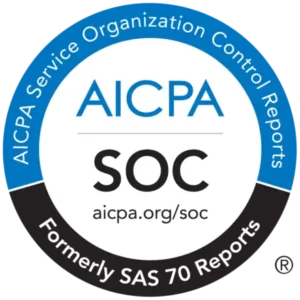Key Takeaways
- 34% of educators are using AI frequently compared to 24% of students, highlighting that educators are more comfortable with and willing to integrate AI into the classroom than students.
- Both educators and students are enthusiastic about the potential of AI, especially around personalized learning. However they both strongly agree that AI cannot replace the human element in education.
- Only 31% of faculty and 27% of students expressed a high level of comfort with AI, highlighting a considerable hesitancy and an overall lack of trust when it comes to AI tools.
- There is a significant gap regarding ethical adherence and AI. 27% of faculty and 55% of students reported unsanctioned AI usage, indicating a need for improved guidelines and education.
Introduction
In 2024, artificial intelligence is being rapidly adopted within most learning environments, making it paramount to understand its impact, usage and overall acceptability among key stakeholders.
This analysis explores the opinions on adopting artificial intelligence within the educational sector by surveying 1,000 graduate, undergraduate, high school, and middle school students and 250 teachers across the United States. The goal was to gauge the overall comfort and opinions around AI technologies and whether students and educators differed significantly, ultimately informing how AI could be implemented and leveraged in a classroom setting for each persona in a responsible, transparent manner.
Findings
Surprisingly, there are higher comfort levels with AI among educators compared to students:
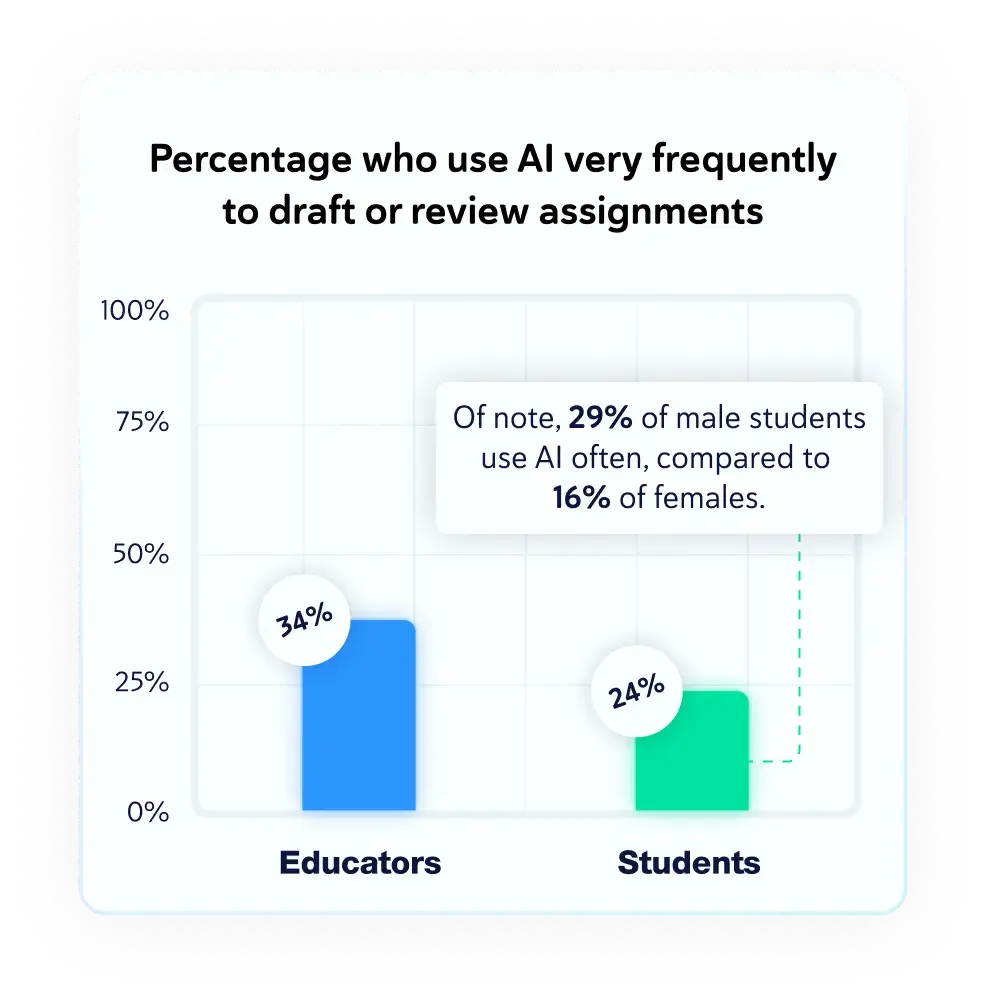
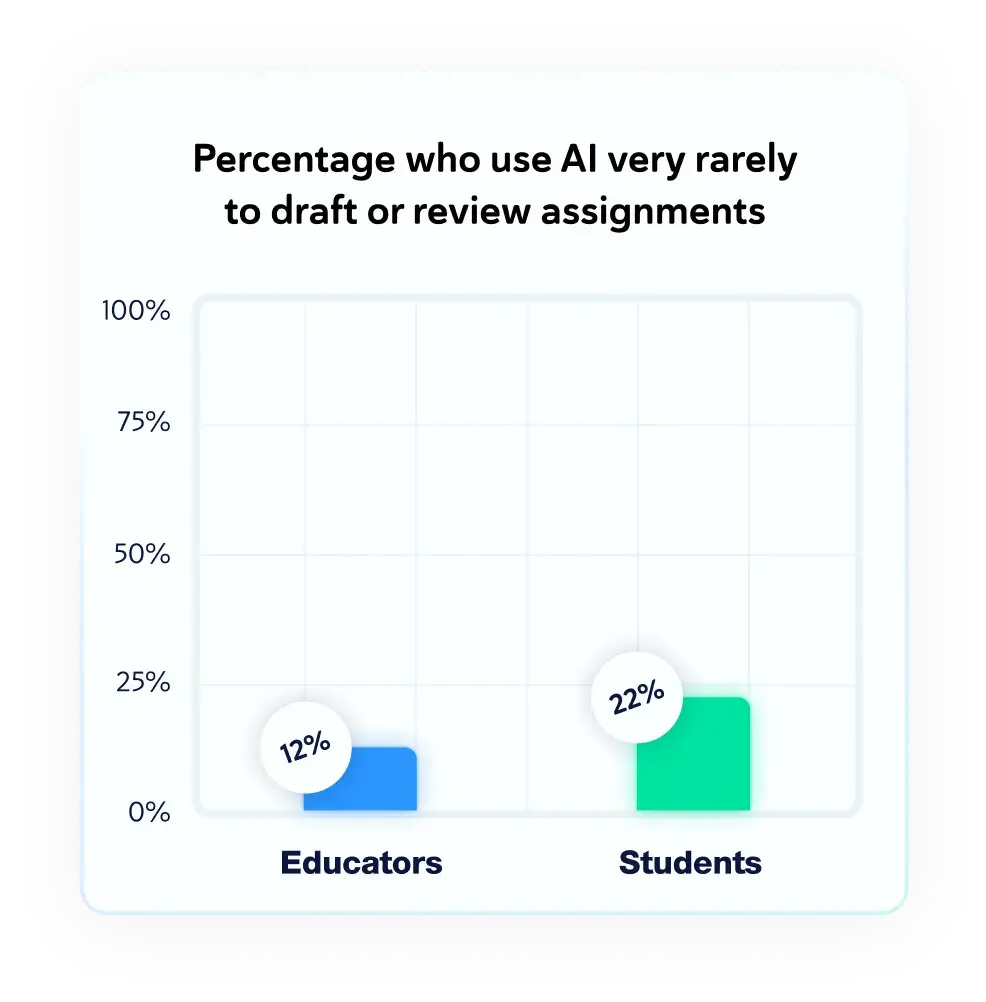
Enthusiasm for AI Integration
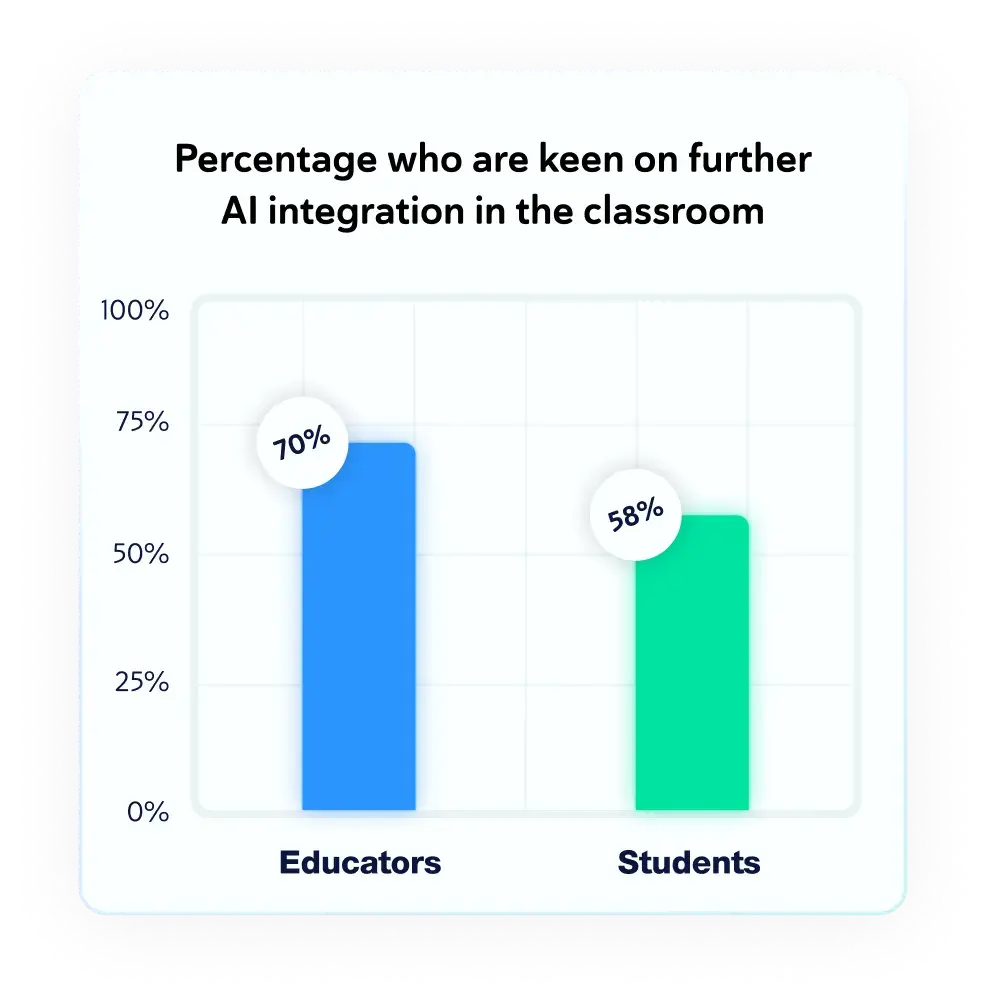
Optimism for Personalized Learning
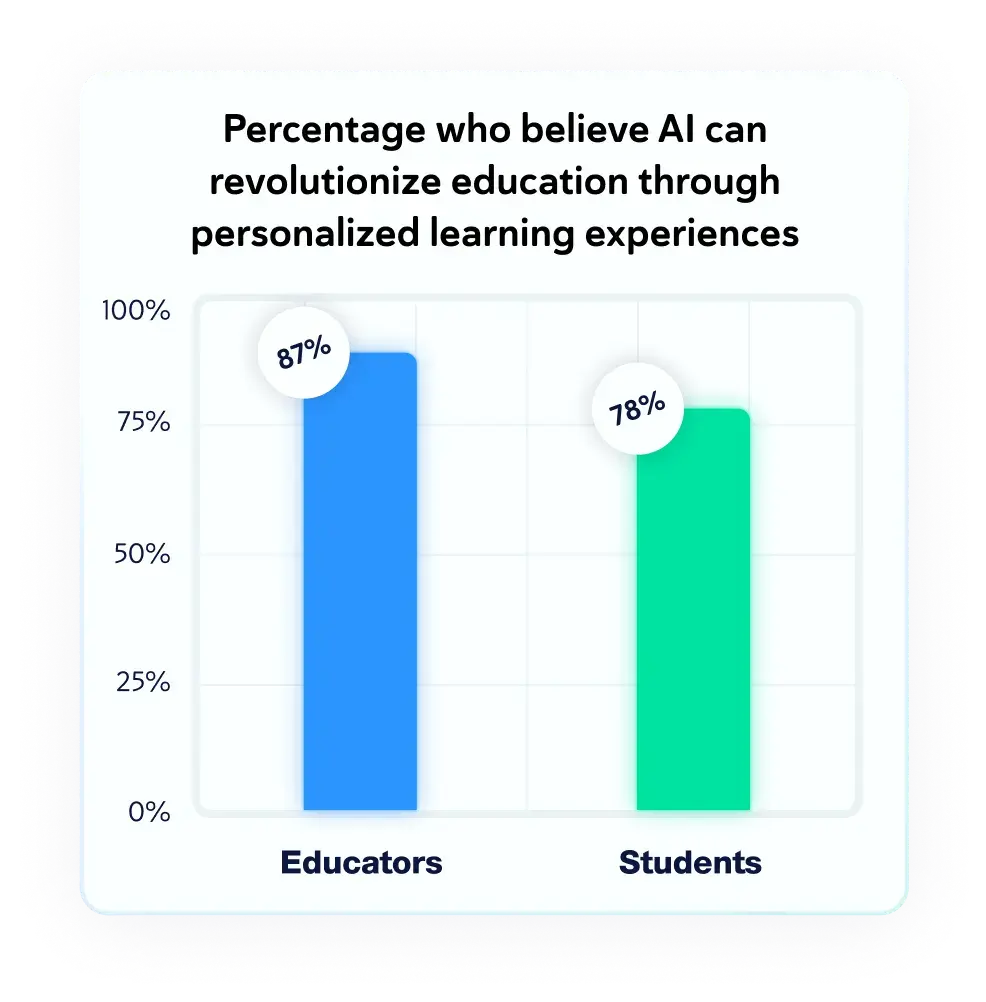
Comfort and Trust in AI Tools
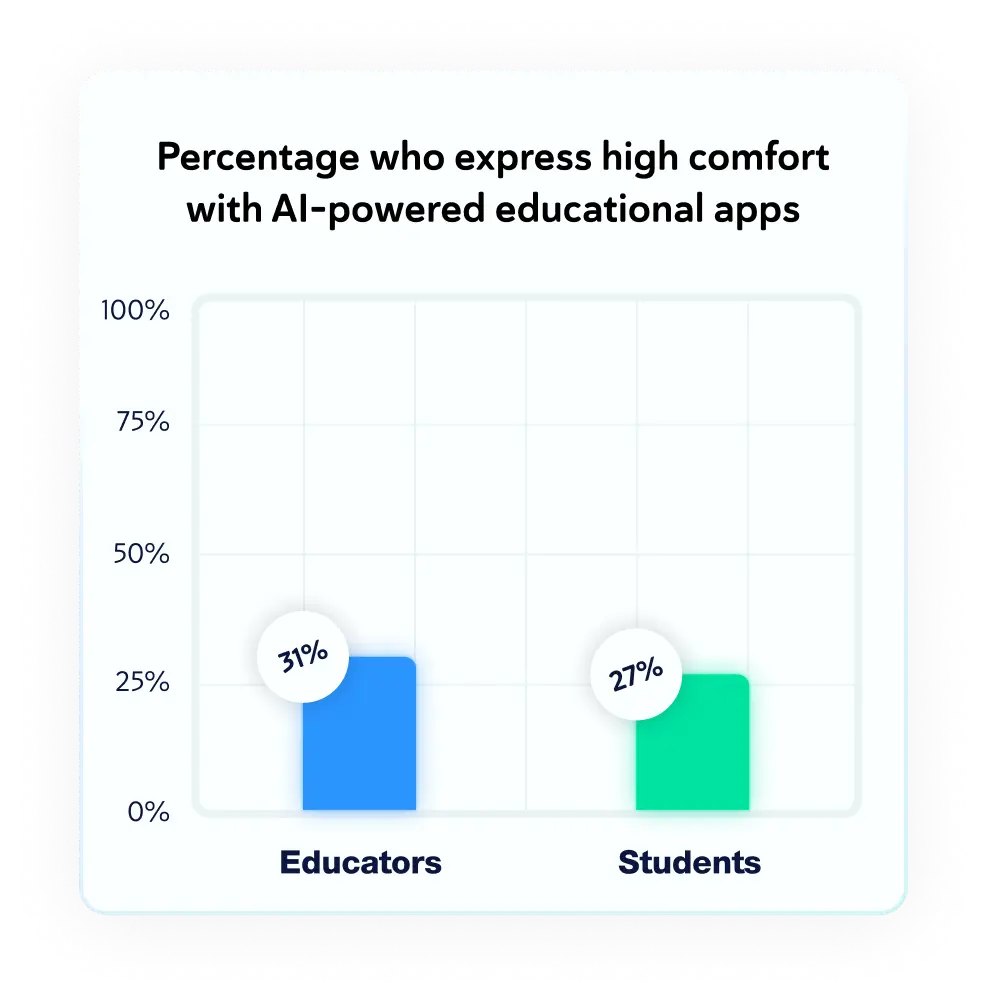
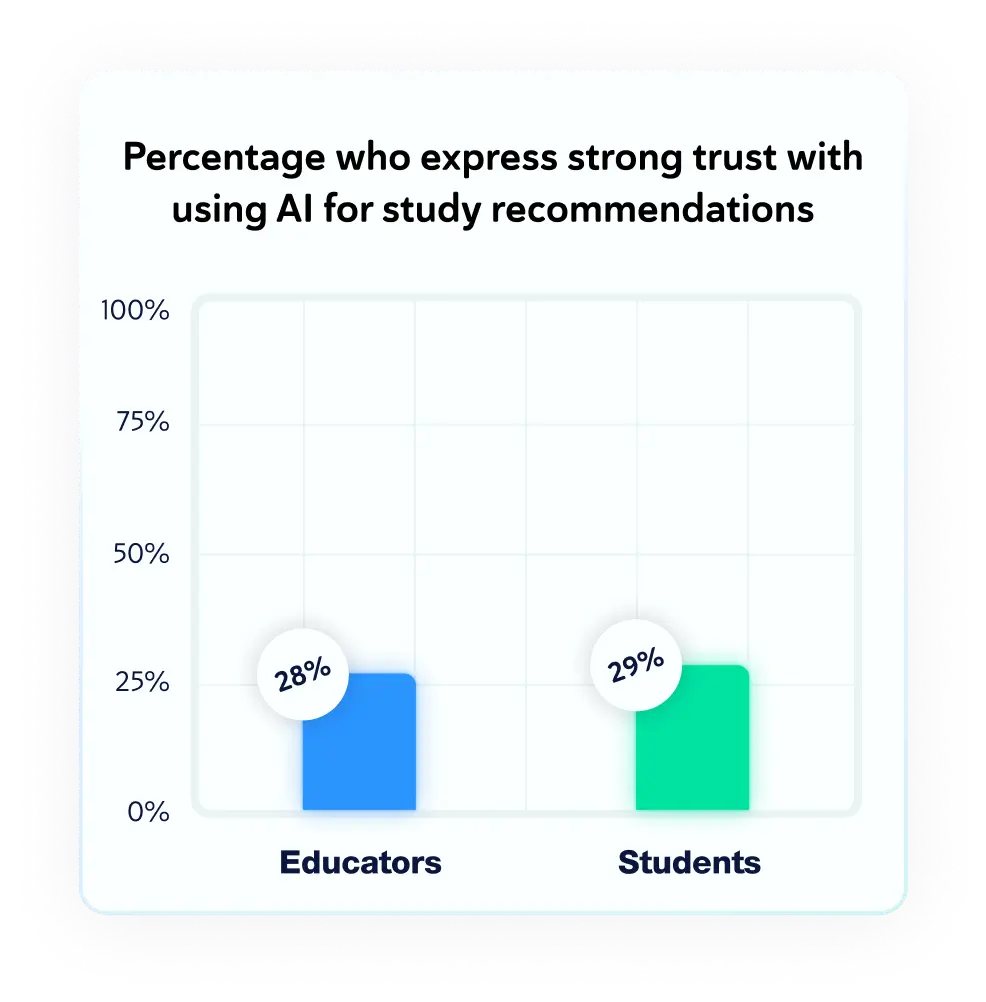
Shared Belief in Maintaining a Human Element in Education
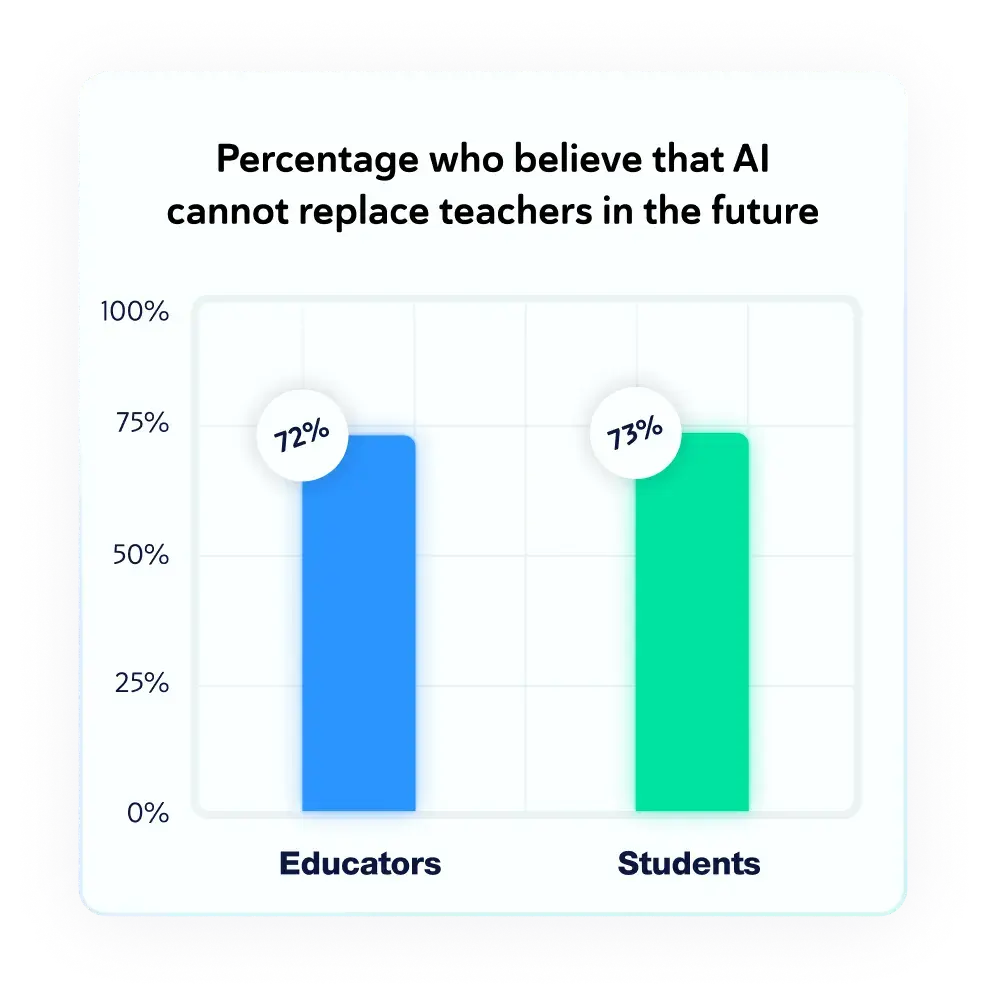
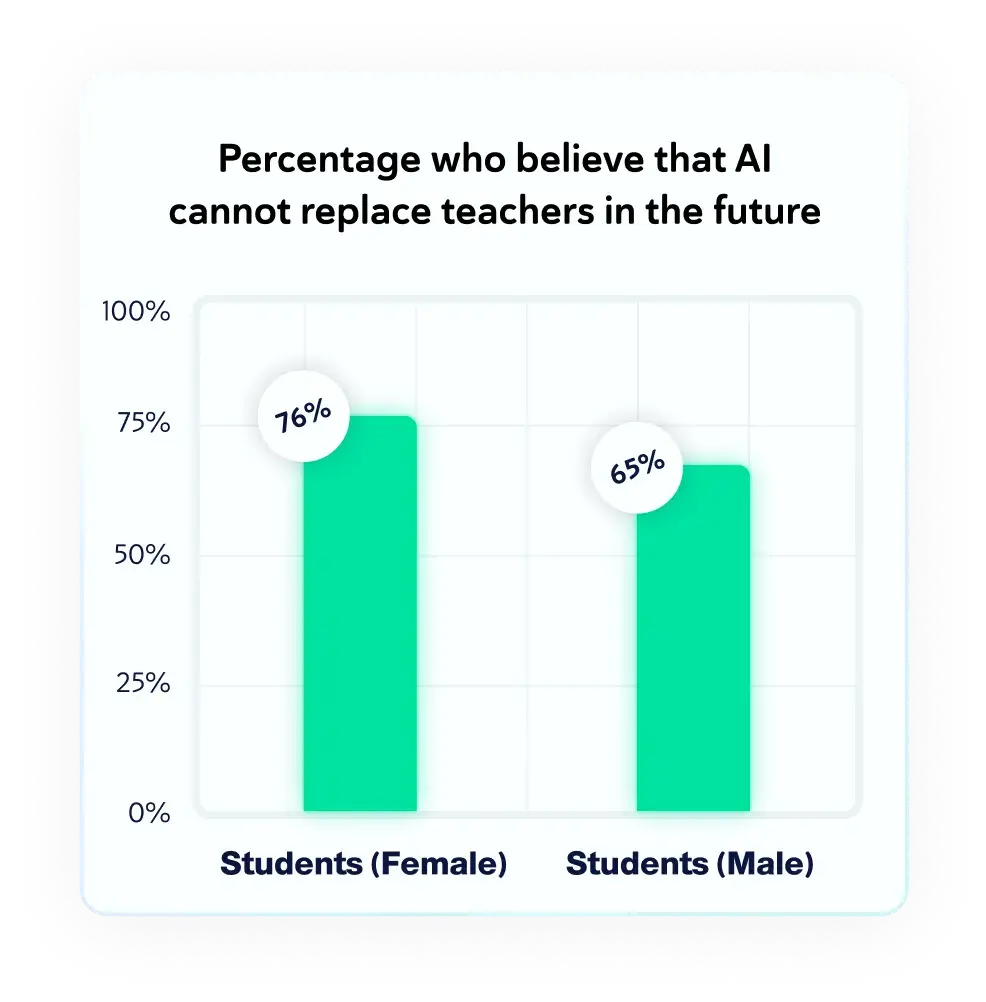
Significant Unsanctioned AI Usage
Faculty and students differ greatly in following school AI ethics policies.
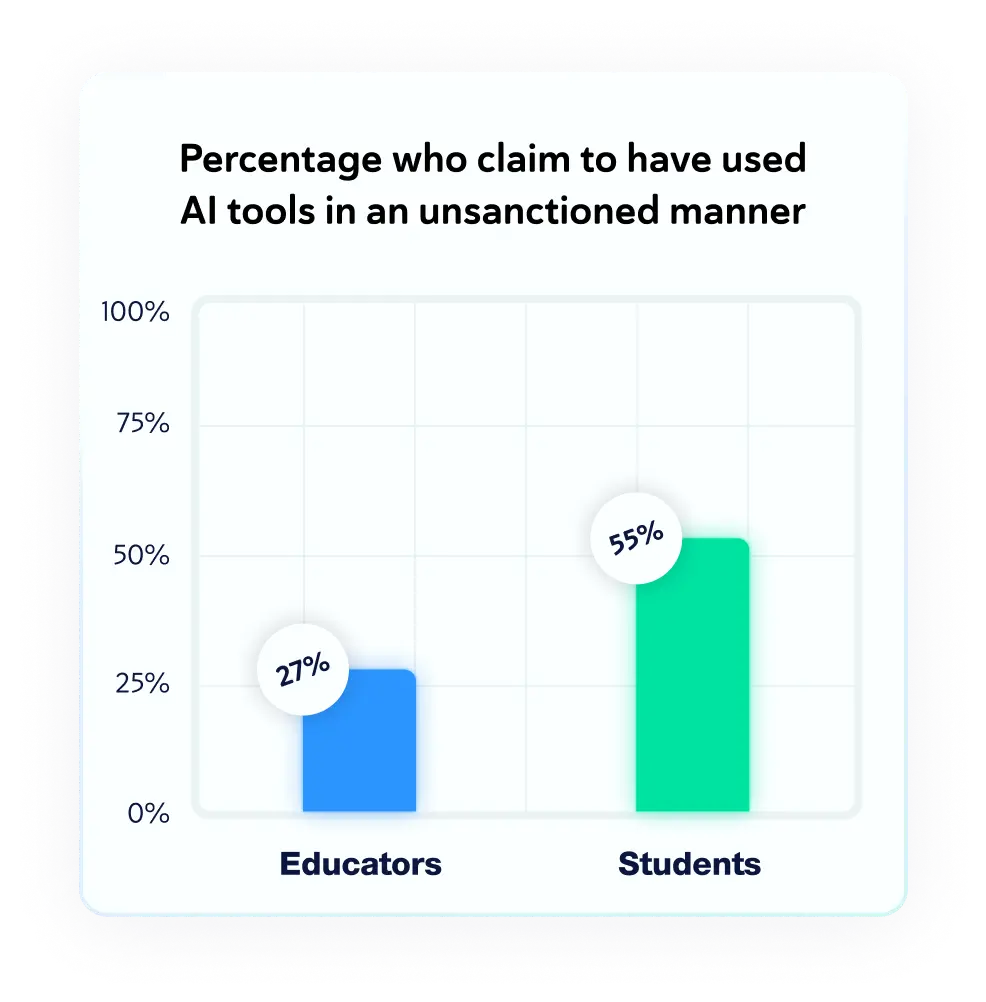
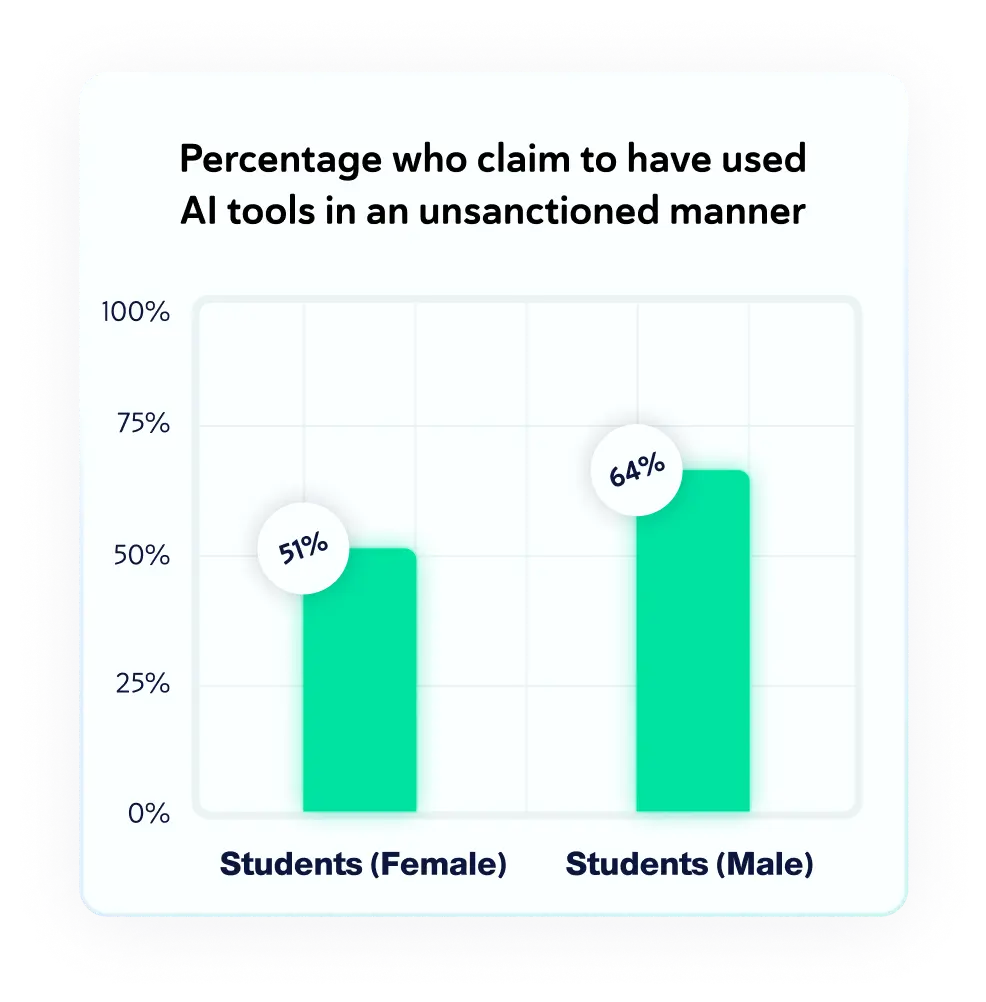
Differing Sentiments on Understanding AI
Key differences surrounding AI literacy.
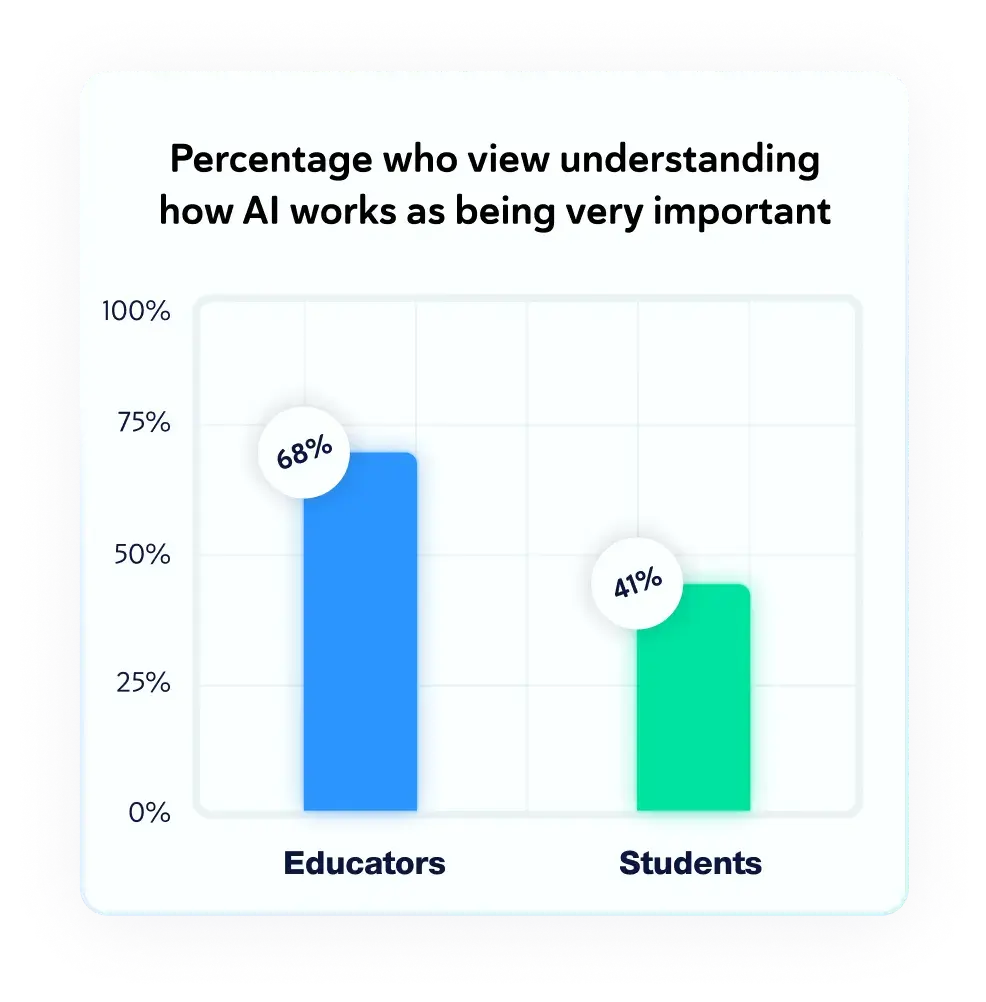
Awareness and Recognition of AI Detection
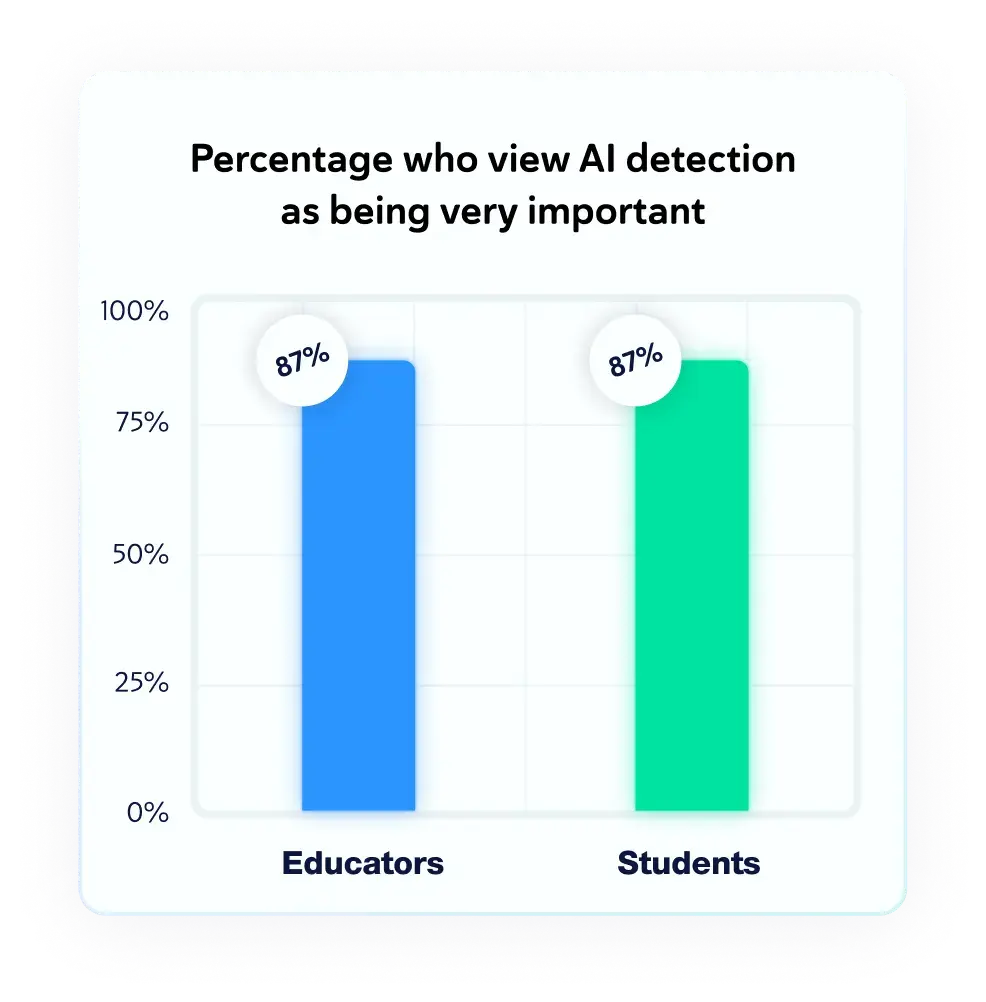
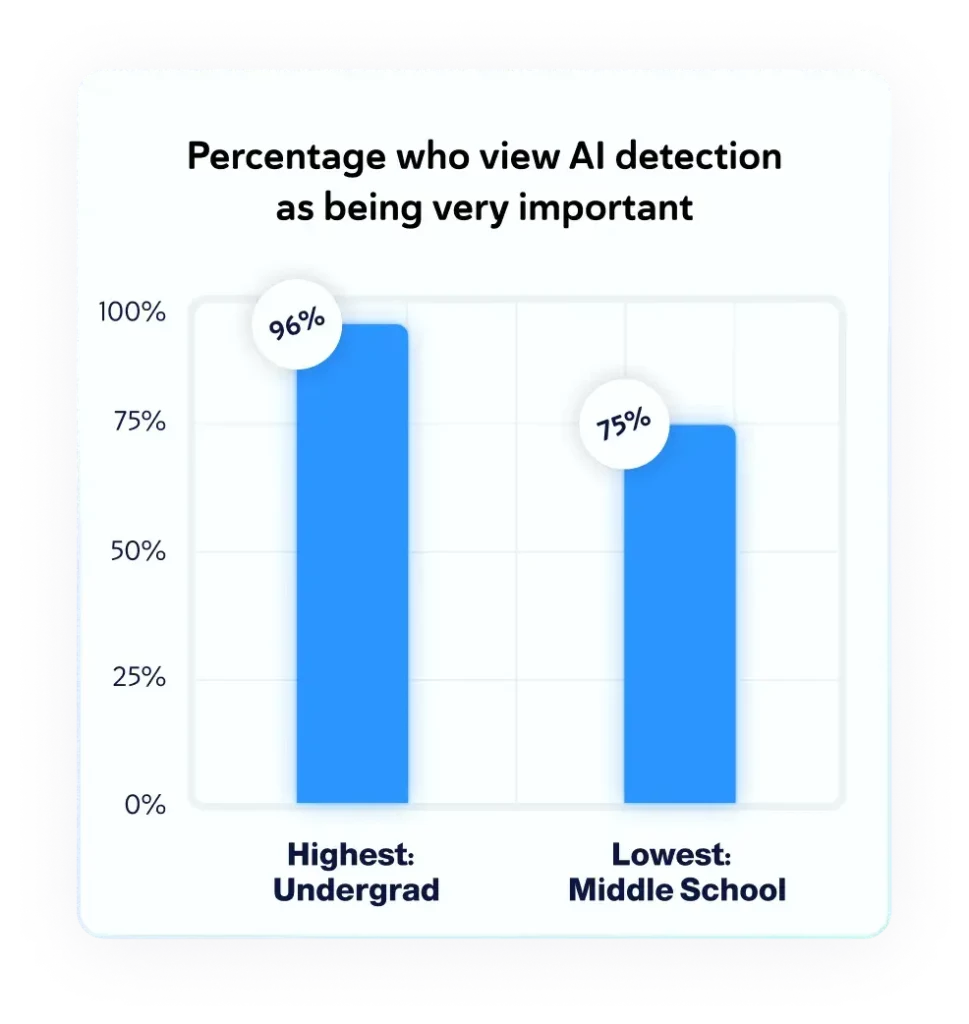
Conclusion
The findings of this study reveal a complex but optimistic landscape of AI in education. In contrast to students, educators exhibit much greater ease and willingness to integrate AI tools into their workflow; a clear majority want more AI integration and find the potential of personalized learning through AI quite real. However, there were sharp disparities between faculty and students in the use and knowledge of AI, suggesting a compelling need for more structured guidelines and educational efforts.
Even though there is noticeable excitement around the potential of AI, there is a notable hesitancy regarding confidence in the AI technology itself, with only 31% of faculty and 27% of students expressing a high level of comfort. Furthermore, both groups agree that education needs a human element. For example, the view that AI cannot replace teachers received overwhelmingly strong support. The study also underlines the importance of taking action to prevent unsanctioned AI use, particularly on the part of students and putting in place robust AI detection measures to protect academic integrity.
Adopting AI, with clear school policies, for personalized learning and improved workflow is a necessary step forward. Equally important will be ensuring that educators and students are well-educated and ethically guided regarding AI to harness its full potential while maintaining the core human elements of education.
